Our ship is an “ice-strengthened” research vessel, built in Finland, but owned by a Russian company. Oceanwide Expeditions leases it, and it has been converted to a cruise line ship, though a rough one. The Prof M sleeps 52 passengers and about 20 staff and crew. The steel ship is 72 meters in length, has a shallow enough draft to get into shallow waters and bays, has a relatively open bow and stern, and a boxy rise in the center. The central structure rises 2 decks above the main deck (deck 3) where the bow and stern are. On top is the bridge deck - half taken up with the bridge and related rooms, and the other half are suites. It’s an “open bridge” ship, which means that passengers are almost always welcome on the bridge to look out at the sea and to watch the crew and instruments at work.
The instrument controls look kind of old (I think the ship was built in the 80’s.) I tend to focus on the GPS instrument at the back of the bridge where the nav charts are always laid out, and the communication gear lives. The navigator marks our position in pencil on a map occasionally. When cruising around the Antarctic Penninsula, this happens often, and when crossing the Drake, it only happens every few hours. There are also printout of weather and sea conditions, and advisories. Today, for example, there is a single page about the sea conditions as we cross the Drake. Moderate to rough seas, swells at 4 meters.
I spend a fair amount of time on the bridge during the Drake Passage crossings. I watch the swells and try to determine their height. Looking over the bow, onto the main deck and beyond, you can appreciate how much this ship rolls and pitches. With a 180 degree view of the sea, one can estimate the pitch and roll. In the Drake, the ship easily rolls +/-20 degrees and pitches +/- 10 degrees. The Drake swells and currents usually strike our beam, so the motion of the ship is unpredictable. Every few swells, there is a big combination pitch and roll, and it seems that the main deck rail will surely dip down into the sea. Not only does it never do this, but rarely does seawater even splash up onto the deck. Nevertheless, the motion is vertiginous and disconcerting. My drugs work well, and it doesn’t make me ill, though it is disquieting.
The bow itself looks like a large scallop from the bridge, with the steel hull displaying a vertical rib every meter or so. The rim of the hull is painted a sky blue, (as is the exterior of the hull), the interior of the hull and the ribbing is white, and the deck floor itself is dark green. Lotta gear out there, but also a lot of space to walk around. The deck rail at the top of the hull is 1.5-2 meters tall, sloping away from the ship, and most of the sections between the ribs have a little step built in so that one can step up and lean over the rail and see the sea. I like doing this when we’re encountering ice because it’s fun to watch the ice get cracked and crushed when the bow strikes it. I tend to stay off the bow deck when there are a lot of other passengers out there, or when people strike the “I’m the king of the world!” pose for photographs.
There is a bar on the 4th deck, where I spend a lot of time reading, writing, having a drink, or chatting with other passengers. On the 3rd deck are the twin dining rooms, which also serve as lecture halls and movie theaters. Just beside the dining room is a white board with the day’s activities and announcements plus a map of the Antarctic Peninsula that gets updated with a marker pen to track where we’ve been.
Passengers have cabins on decks 3, 4, 5. Staff on deck 2, that houses laundry, the sauna. I think the crew sleeps and eats on deck 1, where I’ve not been. The bridge is on deck 6, and there are stairs outside that allow you to walk outside the ship on the main deck (3), decks 4 & 5, and you can also ascend stairs to stand on top of the bridge deck. This is a great vantage point but is exposed and often cold and windy.
All over the ship are handles, hand rails and banisters. While at sea, you really need them because it is difficult to walk or move without supporting yourself. Stuffed between the handrails and the walls are small motion sickness bags, and occasionally a bottle of water. As people take them from the handrails, the staff replaces them.
The ship is always either warm or hot, and often doors are open to the outside decks. One of the two side doors at the back of the bridge are always open, no matter how bad the weather. I’m on deck 5, and an outside door to the stern side of deck 5 is right next to our door. I like to pop out this door and sample the air and see the sea when I step out of our cabin on my way to somewhere.
Tuesday, December 16, 2008
Subscribe to:
Post Comments (Atom)


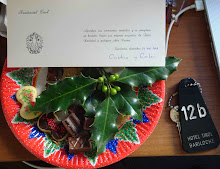














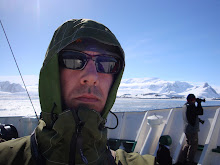




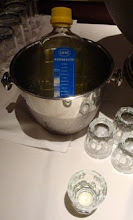
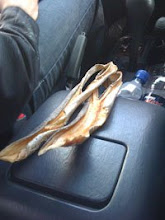








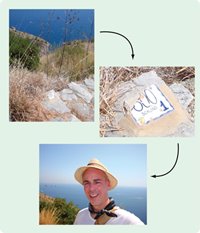














No comments:
Post a Comment